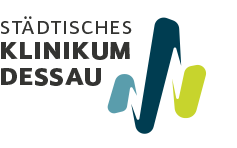Anaesthesia
The basic prerequisite for any operation is freedom from pain. Modern anaesthesia procedures offer different methods for this. Which procedure is suitable for each patient is discussed in the anaesthesia consultation. The type of surgery planned, concomitant illnesses and the patient's wishes must be taken into account. The planning of the anaesthesia also includes considerations regarding post-operative pain therapy, e.g. whether a peripheral and spinal regional anaesthesia procedure can also be used for pain therapy in the further course of the procedure.
We ensure that anaesthesia is carried out in the modern central operating theatre, which has nine operating theatres and is available to the various surgical disciplines. Attached to the operating theatre is the recovery room, where patients are monitored by anaesthetic staff immediately after the anaesthetic has been completed. We also carry out anaesthesia in the delivery room operating theatre and in the outpatient operating theatre. Further anaesthesia workstations are located in the Centre for Ophthalmology, functional diagnostics (MRI, angiography, endoscopy) as well as in the emergency care area in the rescue centre.
All conventional methods of general anaesthesia are used:
- Intravenous anaesthesia
- in all surgical areas and for diagnostic procedures at separate workstations
- for patients at risk of post-operative vomiting
- for outpatient anaesthesia - Balanced anaesthesia (volatile anaesthetics)
- in all areas (for suitable indications)
- Isoflurane, sevoflurane, desflurane in combination with oxygen/air or oxygen/nitrous oxide mixture - Mask and laryngeal masks and intubation anaesthesia
- Mask/laryngeal masks for short procedures
- Intubation anaesthesia for longer procedures, operations in lateral or prone position, for operations requiring mandatory ventilation - Special procedures
- Side-separated ventilation for lung and oesophageal surgery and for special procedures on the upper spine
- Jet ventilation, especially for ENT procedures (e.g. laser removal of vocal fold polyps) and bronchoscopic procedures - Combination of general anaesthesia and local anaesthesia
Makes sense for certain procedures/pre-existing conditions and is discussed with the patient prior to the operation - general anaesthesia and local anaesthesia are possible
- Peridural catheter (e.g. catheter placement in the area of the thoracic spine to eliminate pain during major upper abdominal surgery)
- Peripheral nerve blocks (e.g. blockade of the femoral nerve and the sciatic nerve using catheter technology for knee prosthesis surgery)
- Insertion of plexus catheters (e.g. in hand surgery)
Depending on the surgical procedure, we use various regional anaesthesiological procedures, both as the sole anaesthetic for the operation and in combination with general anaesthesia. Selected procedures can also be used as part of pain therapy.
- Spinal anaesthesia
This is particularly suitable for operations on the lower extremities and for operations in the perineal and lower abdominal area. The duration of effect of spinal anaesthesia can be varied by administering different drugs, so that in principle outpatient surgery can also be performed using this anaesthetic technique.
- Peridural anaesthesia
For major upper abdominal and thoracic operations that are associated with considerable pain intensity, a thoracic epidural catheter is inserted immediately preoperatively under local anaesthesia. This is used for intraoperative and postoperative pain therapy. Lumbar epidural catheters are mainly used in obstetrics.
- Plexus anaesthesia of the upper extremity
Axillary plexus anaesthesia is particularly suitable for operations in the hand and forearm area. They can be administered as a single-shot procedure and as a catheter technique. Single-shot administration can also be used for outpatient surgery. Interscalene brachial plexus blocks are reserved for operations on the shoulder joint.
- Plexus anaesthesia for carotid surgery
Blocking the cervical plexus in the neck area enables operations on the carotid artery while the patient remains conscious. The "maintained contact" with the patient during the operation serves to monitor the oxygen supply to the brain. A lack of oxygen supply can be detected and treated at an early stage, a clear advantage over carotid surgery under general anaesthesia.
- Peripheral nerve blocks
The combined application of two catheters to the femoral nerve and the sciatic nerve in the groin area (under local anaesthesia of the skin and use of a nerve stimulator to ensure the correct position) is regularly used for knee prosthesis surgery. Knee surgery is performed under general anaesthesia, the catheters are already used intraoperatively for pain therapy and for post-operative pain therapy
